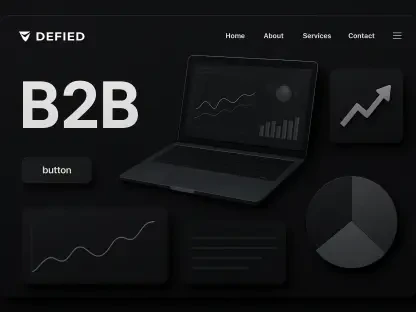Introduction to a Holiday Sales Revolution
Imagine a digital marketplace where millions of holiday shoppers flock not to traditional e-commerce platforms, but to video content creators for gift ideas, product reviews, and instant purchase links, transforming the way commerce happens during peak seasons. This is the reality of YouTube’s Shopping Affiliate program, a game-changing commerce tool that has revolutionized how creators and brands connect with consumers during the high-stakes holiday season. With Black Friday, Cyber Monday, and Christmas driving unprecedented online spending, this platform offers a unique opportunity to tap into seasonal buying frenzies through authentic, creator-led recommendations.
The significance of this program lies in its ability to leverage affiliate visibility within YouTube Studio, providing creators with detailed insights into commissions and performance metrics. Unlike traditional advertising, where budgets often dictate reach, success here hinges on strategic content timing and relevance to capture the holiday sales surge. Brands and creators who master this dynamic stand to gain a substantial edge in a crowded market, making it essential to understand the program’s mechanics and seasonal potential.
This report delves into the intricacies of YouTube Shopping Affiliate tactics, exploring eligibility, earnings, strategic timelines, and brand strategies to maximize holiday sales. By examining current trends and data-driven approaches, it aims to equip stakeholders with actionable insights for navigating the competitive landscape of holiday commerce on one of the world’s largest video platforms.
Understanding Eligibility and Scale for YouTube Shopping Affiliate Campaigns
Who Can Participate: Creator and Geographic Requirements
Participation in the YouTube Shopping Affiliate program is not universal, as strict eligibility criteria define who can engage in this lucrative opportunity. Creators must be enrolled in the YouTube Partner Program, have a minimum of 10,000 subscribers, and reside in supported countries such as the United States, South Korea, India, and several Southeast Asian nations. Additionally, channels categorized as “Made for Kids” or tied to music partnerships are excluded, narrowing the pool of eligible participants.
Geographic limitations pose a significant barrier, with many regions outside the approved list unable to access the program. For brands, this means focusing affiliate efforts on creators in eligible markets to ensure holiday campaigns reach the intended audience. Creators outside these areas face the challenge of awaiting broader rollouts or exploring alternative monetization strategies, impacting their ability to capitalize on seasonal trends.
These restrictions carry strategic implications for global brands, which must adapt by prioritizing partnerships in supported regions. Meanwhile, creators in unsupported areas may need to consider establishing a presence in eligible markets if feasible, or pivot to other platforms for holiday commerce initiatives. Understanding these boundaries is critical for setting realistic expectations and planning effective campaigns.
Scaling Challenges and Considerations
Even for eligible creators, scaling affiliate campaigns during the holiday rush involves navigating several hurdles. Audience demographics play a pivotal role, as a channel with 10,000 subscribers may lack the engaged, commerce-ready viewers necessary for significant sales. Niches like technology, beauty, and lifestyle often align better with shopping behaviors compared to entertainment-focused content, affecting a campaign’s potential reach and impact.
Further complicating scalability are YouTube’s commission cuts and merchant-side limitations. Reports suggest the platform may retain a portion of earnings, reducing net revenue for creators and necessitating careful financial planning. Additionally, brands control which products are available for tagging, meaning creators can only promote what merchants prioritize, often limiting options for holiday-specific inventory or bundles.
These challenges underscore the importance of aligning content with consumer intent and selecting relevant niches for maximum effectiveness. Brands must ensure product availability matches seasonal demand, while creators should focus on building a targeted audience to drive conversions. Overcoming these obstacles requires a blend of strategic foresight and adaptability to achieve meaningful scale during peak shopping periods.
Mechanics of YouTube Affiliate Earnings and Tracking
Commission Structures and Payment Processes
The financial backbone of the YouTube Shopping Affiliate program lies in its commission structures, where brands set rates typically averaging around 15 percent per sale. Attribution windows, defining the period during which a purchase following a click earns a commission, vary by merchant, adding complexity to earnings calculations. This transparency in YouTube Studio allows creators to assess potential revenue before tagging products.
Payments are processed through AdSense, with a delay of 60 to 120 days to account for returns, which can reverse commissions if products are sent back. YouTube also offers performance bonuses for creators achieving high sales volumes during holiday windows, providing an extra incentive to push for conversions. These mechanisms ensure earnings reflect actual sales while rewarding exceptional performance during critical periods.
Understanding these payment timelines and potential reversals is vital for financial planning, especially during the holiday season when sales spikes are common. Creators must anticipate delays and returns, while brands can leverage bonus structures to motivate higher engagement. This system balances risk and reward, aligning incentives for all parties involved in affiliate campaigns.
Tracking and Analytics for ROI
Effective tracking is essential for evaluating the return on investment of holiday affiliate efforts, and YouTube Studio offers robust tools for this purpose. Creators and brands can monitor clicks, conversions, and sales data directly within the platform, providing real-time insights into campaign performance. This visibility helps identify which products and content formats resonate most with audiences during peak shopping times.
Transparent analytics enable stakeholders to adjust strategies on the fly, optimizing content for better click-through rates and conversions. For instance, understanding which videos drive the most sales can inform future tagging decisions, ensuring resources are allocated to high-performing assets. This data-driven approach is particularly valuable during the fast-paced holiday season when consumer behavior shifts rapidly.
Brands benefit from these tools by gaining clarity on which creators and products yield the best results, informing future partnerships and offer designs. The emphasis on detailed tracking fosters a culture of continuous improvement, allowing both parties to refine tactics for sustained success. Leveraging these analytics ensures holiday campaigns are not just reactive but strategically proactive in maximizing sales outcomes.
Strategic Tagging Timelines for Holiday Sales (Black Friday to Christmas)
Pre-Black Friday: Building Anticipation
As early as mid-November, holiday shoppers begin researching gifts, with studies indicating that 75 percent start before the Black Friday frenzy. Creators can capitalize on this by producing wishlist and gift guide videos, tagging evergreen products and limited-stock items to attract early planners. This content sets the stage for upcoming sales, building excitement and intent among viewers.
Brands play a crucial role by pre-loading affiliate offers into YouTube Studio, ensuring creators have access to relevant products and commission details well in advance. Tagging items with confirmed discounts or seasonal appeal during this phase helps establish trust and positions content as a go-to resource for holiday shopping inspiration. Early planning is key to capturing attention before the market becomes saturated.
This preemptive strategy allows creators to stand out in a crowded digital space, offering value to viewers who seek guidance before major sales events. By aligning content with early research trends, both creators and brands lay a foundation for stronger engagement and conversions as the holiday season progresses. Anticipation becomes a powerful driver of clicks and sales in this initial stage.
Black Friday Weekend: Urgency and Conversion
The Black Friday weekend marks a peak in consumer urgency, demanding content that drives immediate action. Creators should post daily Shorts and long-form videos with timestamped tags and categorized chapters, as data shows a 43 percent increase in clicks when on-screen tags are used. Highlighting hero products with visible discounts amplifies conversion potential during this critical window.
Keeping tags updated to reflect inventory changes is equally important, as outdated links can erode viewer trust and reduce click-through rates. Brands must ensure real-time stock updates are communicated through YouTube Studio, enabling creators to maintain relevance in their promotions. This dynamic approach keeps content aligned with the fast-moving nature of Black Friday deals.
Focusing on urgency through time-sensitive messaging and strategic tagging transforms videos into powerful sales tools. Creators who adapt quickly to inventory shifts and emphasize limited-time offers can maximize impact, while brands benefit from heightened visibility and sales velocity. This period is all about capturing the momentum of impulse buying with precision and speed.
Cyber Monday: Last-Chance Engagement
Cyber Monday serves as a pivotal moment for converting hesitant shoppers, requiring content that emphasizes final opportunities to save. Creators can retarget audiences with “last-chance” Shorts featuring top-performing products from the Black Friday weekend, alongside updated thumbnails and pinned comments to stress deal expiration. This tactic re-engages viewers who may have delayed their purchases.
Testing product variants, such as different colors or sizes, during this phase can further boost conversions by addressing specific preferences. Community Posts with tagged products offer an additional touchpoint to reconnect with recent viewers, reinforcing urgency and encouraging immediate action. These strategies ensure no potential sale is left untapped as the window for major discounts narrows.
Brands can support this effort by providing updated promotional details and ensuring offer visibility in YouTube Studio. The focus on last-chance messaging creates a sense of scarcity that drives decisions, benefiting both creators and merchants. Cyber Monday becomes a critical checkpoint to solidify gains from the preceding sales events through targeted, urgent content.
December Gifting Surge: Sustained Momentum
Following Cyber Monday, consumer focus shifts toward personalized gifting, sustaining purchase intent well into December. Creators should pivot to content highlighting specific recipient types, tagging complementary accessories to increase order value. Videos featuring real-world use or unboxing can serve as social proof, enhancing viewer confidence in tagged products.
As shipping cutoffs approach, typically around December 18-20 for standard delivery, transitioning to e-gift cards and digital products becomes essential. These instant-delivery options maintain affiliate revenue streams when physical shipping is no longer viable. Categories like gaming credits and streaming subscriptions see heightened demand in this late stage, aligning with last-minute gifting needs.
Brands benefit from ensuring digital offerings are prominently featured in affiliate catalogs, supporting creators in this content shift. This sustained momentum through tailored storytelling and strategic tagging keeps sales flowing beyond initial holiday peaks. December transforms into an extended opportunity to connect with shoppers seeking meaningful, timely gifts.
Brand Strategies for Effective Affiliate Offers
Commission Design and Incentives
For brands, crafting competitive commission structures is fundamental to attracting creator participation during the holiday rush. Typical rates range from 1 to 10 percent, with short-term boosts during peak periods like Black Friday signaling priority to creators. Transparent metadata in YouTube Studio displaying these uplifts ensures offers stand out in a crowded marketplace.
Implementing tiered rates for specific products or approved creators can further incentivize tagging activity. Such designs motivate creators to prioritize high-value or seasonal items, aligning their content with brand goals. This strategic approach to commissions balances cost with the need to drive visibility and sales during critical holiday windows.
Holiday-specific incentives not only boost immediate engagement but also build long-term creator relationships. Brands that adjust rates dynamically based on performance data can optimize their affiliate programs for maximum impact. A well-structured commission plan becomes a powerful tool to influence tagging decisions and enhance holiday campaign outcomes.
Bundles, Promotions, and Creator Codes
Simplifying the shopping experience through bundled gift sets offers a dual advantage for brands, streamlining creator tagging while increasing average order values. High-margin categories like beauty kits and lifestyle gadgets are ideal for bundling, providing convenience to holiday shoppers and aligning with popular content formats on YouTube. This tactic enhances both sales potential and viewer satisfaction.
Incorporating promotions and creator-specific promo codes via Merchant Center adds another layer of appeal. These codes, visible alongside tagged products, reinforce authenticity and trust at checkout, even if not required for tracking. Targeted discounts communicated through YouTube Studio ensure creators highlight offers that resonate with their audiences during peak gifting times.
Such strategies elevate a brand’s discoverability and conversion rates by making affiliate offers more compelling. Bundles and promotions cater to the holiday shopper’s desire for value and ease, while codes strengthen attribution and engagement. Brands that master these elements position themselves as preferred partners for creators navigating the seasonal sales landscape.
Turning YouTube Shopping into a Holiday Sales Powerhouse
The holiday season, spanning Black Friday to Christmas, represents a marathon of opportunity for creators and brands leveraging YouTube Shopping Affiliate tools. Creators who integrate tagging across all video formats, including Shorts, long-form content, and Community Posts, maximize reach and engagement with diverse audiences. This multi-format approach ensures no viewer segment is overlooked during the buying frenzy.
Brands must maintain discoverability within YouTube Studio by consistently updating offers and providing compelling incentives. Clear communication of commission boosts and promotional details keeps products top-of-mind for creators, encouraging frequent tagging. This proactive stance transforms static listings into dynamic sales drivers throughout the holiday period.
The synergy of precise timing, visible tags, and strong offers redefines YouTube as a sustained sales engine. When creators schedule content to align with consumer intent and brands support with attractive, accessible offers, the platform becomes a powerhouse for holiday commerce. This combined effort unlocks significant revenue potential, setting a benchmark for seasonal success.
Reflecting on Holiday Success and Future Pathways
Looking back, this exploration of YouTube Shopping Affiliate tactics revealed how creators and brands harnessed the platform’s commerce capabilities to drive holiday sales. The detailed analysis of eligibility, earnings mechanics, strategic timelines, and offer designs provided a comprehensive roadmap for navigating the competitive landscape of Black Friday, Cyber Monday, and Christmas campaigns.
Moving forward, stakeholders should prioritize building content calendars that mirror consumer buying patterns, ensuring creators remain relevant at every stage of the holiday journey. Brands, on the other hand, are encouraged to refine affiliate offers with competitive commissions and innovative bundles, fostering stronger creator partnerships. These actionable steps lay the groundwork for immediate impact.
Beyond the holiday season, the insights gained point toward cultivating year-round YouTube Shopping habits, promising sustained growth and revenue. The emphasis on data-driven optimization and strategic alignment offers a vision for transforming temporary sales spikes into enduring commercial success. This approach paves the way for long-term innovation in digital commerce strategies.









